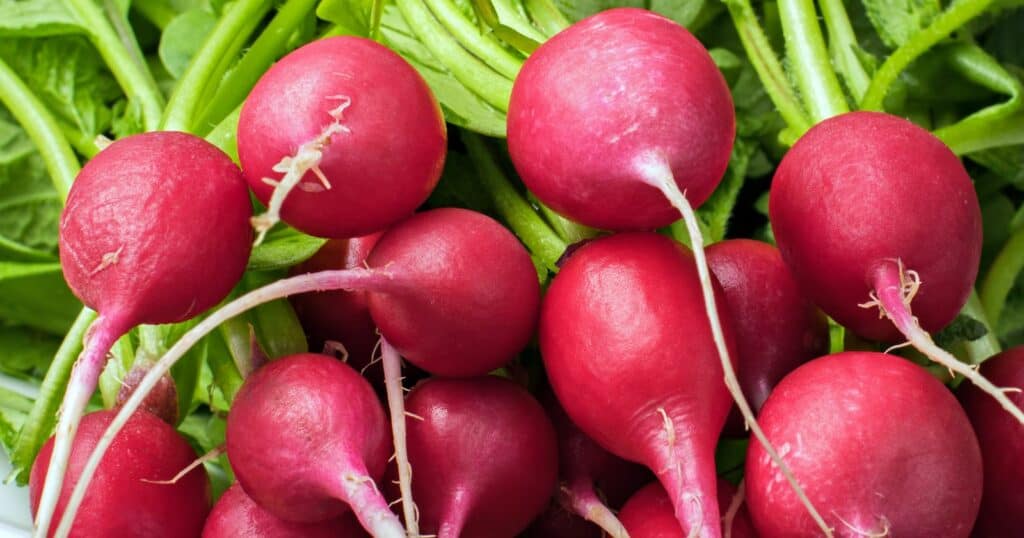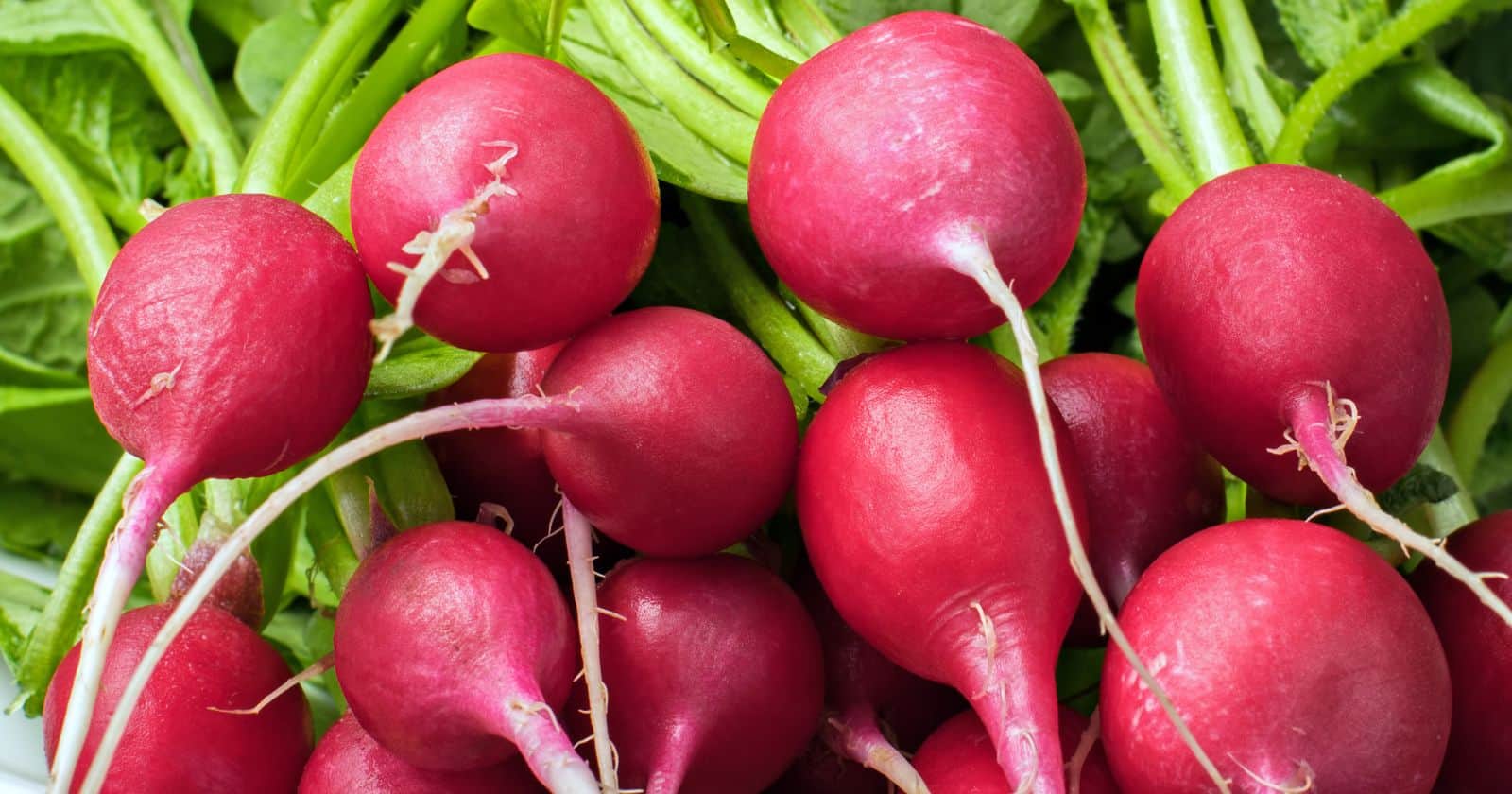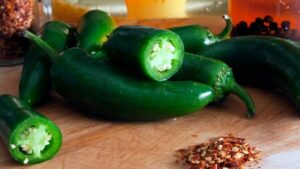If you’ve ever bitten into a freshly harvested radish, you know they pack a peppery punch that can take you by surprise. But are radishes actually supposed to be so spicy?
As it turns out, the answer is more nuanced than you might think.
Contrary to popular belief, radishes are not inherently spicy. The zing we associate with radishes doesn’t come from spicy compounds like capsaicin, the fiery molecule in chili peppers. Rather, radish spiciness is the result of a chemical reaction that occurs when radishes are damaged or eaten.
Within whole, undisturbed radishes, compounds called glucosinolates coexist with enzymes called myrosinase. But when a radish is sliced or chewed, these components mix and react to form a new compound named allyl isothiocyanate. And it’s this new molecule that gives radishes their signature peppery bite and spicy sensation.
So in their natural state, radishes are quite mild-mannered. Their
While all radishes have the capacity for spiciness, some varieties and growing conditions can intensify their pungency. Factors like hot weather, dry soil, and harvesting radishes past peak maturity will increase their allyl isothiocyanate levels and
Luckily, there are also ways to temper radish spiciness through careful preparation techniques. Methods like roasting, pickling, and pairing radishes with creamy ingredients can balance their heat. Even just peeling radishes helps remove the most intensely spicy outer layers.
So the next time you dig into a crunchy radish, remember—its
What Makes Radishes Spicy?

The spicy flavor of radishes comes from the interaction of two chemical compounds found within the radish itself:
- Glucosinolates – These are sulfur-containing compounds found in all cruciferous vegetables, including radishes, broccoli, and cabbage. They are not spicy on their own.
- Myrosinase – This is an enzyme also naturally present in radishes and other crucifers. It acts as a catalyst for breaking down glucosinolates.
When the radish is physically damaged in some way, the glucosinolates and myrosinase combine to form allyl isothiocyanate – the source of radish spiciness.
Think of it like a chemical reaction waiting to happen inside the radish. Once activated through biting, cutting, or cooking, these precursors transform to release the flavors and aromas we associate with radishes.
Do Radishes Contain Capsaicin?
Capsaicin is the fiery compound that gives chili peppers and hot sauces their trademark heat. This pungent molecule tricks our taste receptors into perceiving “spiciness” through the sensation of pain.
Given their peppery bite, you may wonder—do radishes contain capsaicin too?
The answer is no. Radishes do not naturally contain any capsaicin.
The burn of radishes comes from a completely different compound called allyl isothiocyanate. As mentioned before, this molecule forms when radish cells are ruptured and glucosinolates mix with myrosinase enzymes.
Allyl isothiocyanate delivers a wasabi-like zing that tingles the tongue. But make no mistake – radishes get their
In fact, radishes and chili peppers are not even botanically related. Red hot chilies belong to the nightshade family Solanaceae, while radishes are part of the mustard family Brassicaceae.
The absence of capsaicin is why radish spiciness is relatively mild compared to the searing heat of chilies. If radishes contained capsaicin, they would be virtually inedible!
So while both radishes and chilies are considered pungent, spicy foods, they derive their
Factors That Influence Radish Spiciness
While all radishes have the capacity to become spicy, some varieties and growing conditions can make radishes hotter and more pungent. Here are some of the factors that affect radish spiciness levels:
Growing Conditions
- Hot weather – High temperatures can cause radishes to develop a sharper flavor. Plant radishes in cool weather for milder radishes.
- Dry conditions – Insufficient water leads to more pungent radishes. Keep radishes consistently watered for optimal flavor.
- Pest damage – Insect nibbling can trigger increased production of defense compounds, making radishes hotter. Minimize pest issues to prevent this.
Harvesting and Storage
- Maturity at harvest – Overripe radishes become increasingly spicy. Harvest them when roots reach optimal size for variety.
- Storage length – The longer radishes are stored after harvest, the more pungent they become. Use freshly harvested radishes for mildest flavor.
Varietal Differences
- Cultivar – Some radish varieties are bred to be more pungent. Opt for milder cultivars like French Breakfast or White Icicle.
- Root color – Red radishes are often hotter than white or purple varieties.
- Root size – Mini radishes tend to be less spicy than full size varieties.
Ways to Prepare Radishes
Radishes can be prepared in many ways, each bringing out their unique flavors and textures:
Raw Radishes
Eating radishes raw preserves their signature crunch and peppery bite. Thinly slice or quarter radishes and enjoy them:
- On their own as a spicy, refreshing snack
- In green salads, noodle salads, or slaws
- As a crunchy topping on tacos or grain bowls
- On a veggie tray with dip or hummus
Add a pinch of salt to balance and enhance radish flavor when eating them raw.
Cooked Radishes
Cooking mellows the spicy edge of radishes, bringing out their natural sweetness:
- Roasting – Toss cubed radishes in oil, seasonings, and roast at 400°F until caramelized.
- Sautéing – Cook chopped radishes in butter or oil over medium-high heat until softened.
- Boiling/steaming – Add radish chunks or slices to boiling water or steamer until tender. Season and toss with butter.
Cooking radishes pairs well with creamy or sweet ingredients to balance their flavor.
Pickled Radishes
Pickling radishes in a brine solution adds tangy, complex flavors:
- Use a simple brine of vinegar, water, sugar, and salt. Add spices like mustard seeds or chilies.
- Refrigerator pickles take only 15-30 minutes. Fermented versions take 1-3 weeks.
- Enjoy pickled radishes as a condiment, side, or salad topper.
Tips for Controlling Radish Spiciness
If you find radishes to be too hot for your liking, there are ways to temper their
- Peel radishes before eating to remove the most pungent outer layer.
- Soak sliced radishes in ice water for 15-30 minutes to dilute spicy compounds.
- Pair radishes with creamy, fatty, or sweet ingredients to balance their heat.
- Opt for milder radish varieties like French Breakfast, White Icicle, or Plum Purple.
- Grow radishes in cooler weather and keep them consistently watered to prevent excess pungency.
- Harvest radishes when roots first reach mature size to prevent over-spiciness.
- Cook radishes thoroughly to mellow their flavor. Roasting, sautéing, and boiling can make them milder.
Finding ways to balance and control radish
Types of Radishes and Their Flavor Profiles
While all radishes share that signature hot and crisp bite, there is actually quite a bit of diversity among radish varieties. Here’s an overview of some common types of radishes and their heat levels:
Common or Garden Radish
The most widely available radish, these have a rounded red root with bright white flesh. They grow quickly, ready to harvest in as little as 3-4 weeks. Common radishes have a very hot, spicy bite. Great for eating raw but also delicious roasted.
French Breakfast Radish
Oblong in shape with rosy scarlet skin and white tips. The name comes from their traditional use in France as part of a light breakfast. French Breakfast radishes are milder in flavor with a moderate
Daikon Radish
Large, elongated white roots up to 20 inches long. Most commonly used in Asian cuisine but gaining popularity in the West. Daikon has a sweet, mellow flavor with just a bit of spicy kick compared to other radishes. Excellent for pickling, adding raw to salads, and grating into slaws.
Watermelon Radish
Visually stunning with a pale green exterior and bright fuchsia interior. Watermelon radishes have a sweet, juicy flesh and mild
Black Spanish Radish
As the name suggests, these heirloom radishes have striking black skin and crisp white flesh. They have a deliciously sweet and earthy flavor that is less pungent than most radishes. Black Spanish radishes hold up well when cooked and lend beautiful color when thinly sliced.
White Icicle Radish
Slender, tapered roots that grow up to 6 inches long. True to their name, White Icicle radishes are mild-tasting and less peppery than other varieties. Their smooth texture and refreshing flavor make them a great choice for eating raw in salads or slaws.
With so many types of radishes to choose from, you can find options at varying
How To Cook Radishes To Make Them Less Spicy
For those sensitive to the naturally peppery bite of radishes, cooking is one of the most effective ways to mellow their heat. Here are some tips for preparing radishes to tame their spiciness:
Roast Radishes
Roasting is one of the best ways to caramelize radishes, transforming their
- Preheat oven to 400°F. Cut radishes into wedges or cubes.
- Toss radishes with olive oil, salt, and pepper. Spread on a parchment-lined baking sheet.
- Roast for 15-20 minutes until browned and tender, stirring halfway through.
Sauté Radishes
Sautéing radishes over high heat helps concentrate their natural sugars while reducing spiciness.
- Heat oil or butter in a skillet over medium-high heat.
- Add chopped or sliced radishes. Sauté for 3-5 minutes until lightly browned.
- Season with salt, herbs, or citrus juice.
Boil or Steam Radishes
Boiling or steaming radishes significantly reduces their pungent compounds, resulting in a mellow flavor.
- Cut radishes into chunks or slices.
- Steam for 5-7 minutes until fork tender. Alternatively, boil for 4-5 minutes.
- Toss with butter, herbs, or creamy sauces after cooking.
Pickle Radishes
Pickling radishes in an acidic liquid helps balance their spicy bite with tangy flavors. Enjoy pickled radishes as a garnish or condiment.
Pair Radishes with Sweet or Creamy Foods
Combining radishes with ingredients like sweet fruits, creamy cheeses, or rich sauces helps moderate their spicy impact on the palate.
So if you shied away from radishes in the past due to their heat, don’t give up on them yet! With the right cooking techniques, even the most peppery radishes can be tamed into a delicious and versatile ingredient.





